“American Born Chinese” Celebrates Authentic Chinese-American Heritage
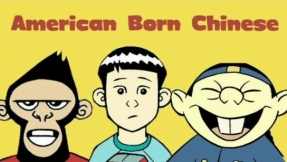
The teenage angst of grappling with identity is often a theme of comic books and literature. American Born Chinese by Gene Luen Yang puts a new exploration of identity through the perspective of Jin Wang, a young Chinese-American student who navigates the second-generation life while grappling with bullying, dating, and friendships. Though his parents do not play a large role in the graphic novel, they are perceived as having a greater connection to China and the Chinese culture, by speaking Mandarin at home and using Chinese medicinal cures. The graphic novel is one of the first of its kind, telling a story from a Chinese-American point of view and having been written by one, as well.
Jin Wang, though at times unlikable, breaks the archetype of Asian-American sidekick seen in other comics and graphic novels. Unlike some of the other Asian and Asian-American comic book characters, like Glenn Rhee from The Walking Dead, or Kato from The Green Hornet, who are more secondary characters to a non-Asian lead, Jin is the protagonist of the graphic novel. Regardless of ethnicity, the unifying themes of bullying, unrequited love, and familial embarrassment make him empathetic. Yet, distinctly Chinese cultural elements such as the folklore of The Monkey King based on Journey on the West, and the caricature of Jin Wang’s cousin represents the Asian-American stereotypes that continue to pervade ignorant circles. The three main narrations, of Jin Wang, of the legendary Monkey King from Chinese folklore, and Jin’s “American” alter-ego, Danny, interweave to show the representation of East-meets-West, tradition vs modernity struggles that surround Asian-American identities.
The Search for Identity
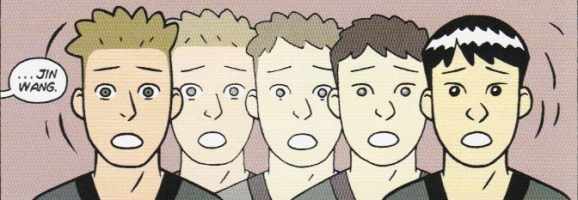
The Monkey King is an analogy for the perception of equality that all children have before race is introduced and social norms are taught. When talking with the other kings, the Monkey King views him no different from anyone else. After he is shunned from a gathering because he is a monkey, he tries to assimilate to the humans by dressing in a human fashion, walking like a human, and practicing Kung Fu. He changes size to be more human like and gets trapped; the only way to escape is to revert back to his monkey size.
The Monkey King follows a similar growth as Jin. Initially, they accept themselves. Only after others note their differences do they become preoccupied with assimilating. After they assimilate though, there is a black-and-white view of identity, that by being human or American, you have to reject the life you grew up with. However, they eventually come to accept themselves and see value in their background and the characteristics that make them unique.
Often exotified, Asian-Americans are still, at times, viewed as more “foreign” despite the shared nationality and relatable childhood experiences. The cultural heritage remains “imported” and distinct from mainstream American culture. In a conversation between Jin and his Taiwanese friend, Wei-Chen, Jin demonstrates a hierarchy between American culture and Asian-American cultures. He continually scolds Wei-Chen for acting too much like a FOB (Fresh off the boat), and encourages him to assimilate with the predominantly white culture of their school.
As with other ethnicities, Yang explores the dichotomized identity of being an American with a different cultural background. Jin’s cousin, Chin-Kee, from China represents not only the negative Asian-American stereotypes, but is the embodiment of Jin’s own ideas of what Chinese heritage is. Chin-Kee’s name, homonymous with the ethnic slur, represents the prejudices and the consolidation of the Asian-American identity. Chin-Kee speaks broken English, is obsessed with getting an American wife with large breasts, and the stereotype of straight-A student. Seen between the interactions with the Caucasian students and Chin-Kee, the person with the greatest disdain for Chin-Kee and his quirks is Jin.
As Jin matures from childhood to adulthood he realizes the value in his cultural and linguistic traditions as seen in his interactions from his Chinese cousin, and the Chinese herbalist’s wife. He is no longer ashamed of his cultural heritage, but realizes that he doesn’t need to choose between his heritage and his nationality.
Juggling Stereotypes
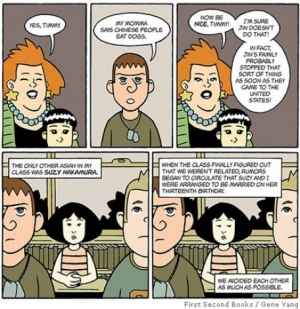
However, the narrative is not exclusive to Asian-Americans. The setting is a predominantly white-suburb and the juxtaposition of Jin and the two other Asian students, a Taiwanese boy and a Japanese-American girl demonstrate the micro-aggressions that persist to this day. Several students ask if they eat dog. Jin and the Japanese-American girl, the only other Asian-American student when he first arrives, are asked if they are related since they are both Asian-American. However, as the children become teenagers, Jin meets people more open-minded and accepting of cultural differences.
While Jin still tries to assimilate to mainstream culture, by channeling a Caucasian alter-ego named “Danny”, he is inculcated with the stereotypes. Overly critical of Chin-Kee’s behavior, he further juxtaposes the American culture and the Chinese culture with the tropes of the “American, macho basketball player” and the “nerdy, socially awkward Chinese student”.
With Jin’s crush on Amelia, a commentary on the reality of interracial couples exists. While his friends are hesitant, yet supportive, Amelia’s Caucasian friend, Greg continually hinders the budding relationship and tries to dissuade Jin from further pursuing her for no other reason than the vaguely veiled racism. Wei-Chen and the Japanese-American girl’s relationship has little discussion other than the middle-school-esque jabbing showing a greater tolerance and expectation for same-race relations.
As a Caucasian-American studying Asian and Asian-American relations, the graphic novel not only made me deeply empathize with the Jin Wang, but also check my privilege. The nuances between the American subcultures are heightened and exotified, while the mainstream culture that I grew up it has never been questioned nor have I ever had to defend it. The reactions towards some of Jin’s behavior and the behavior of his white peers made me cringe as I recounted the plethora of opportunities in my own life where micro-aggresions towards subcultures has, and continues to exist.
America is often called the “melting pot” because of the multitude of immigrants and ethnicities that are represented. However, the problems of minority oppression still persist in the devaluation of cultural norms. Instead of viewing Asian-American culture as a part of American culture, it is still viewed as a distinct sub and, at times, counter-culture. Chinese-Americans have a fusion culture that is celebrated in the graphic novel but, moreover, an enriching culture that needs to be better acknowledge and celebrated by other ethnicities.
Characters like Jin represent the Chinese-American experience. From his own experiences, Yang gives his character justice with the complexity and at times, contradictory behavior. He breaks the stereotypes of Chinese-American characters, while acknowledging they exist, an highlights the authentic voice of a conflicted child.
What do you think? Leave a comment.
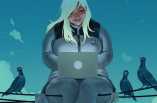
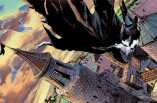
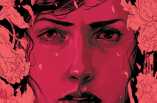
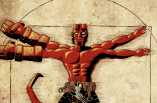
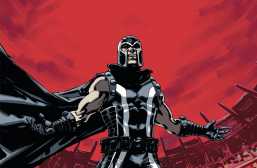
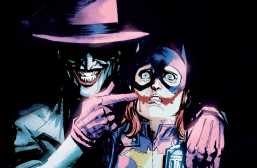
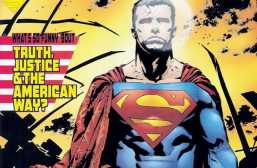
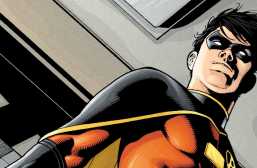
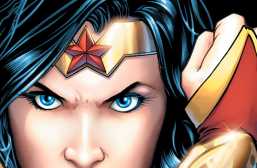
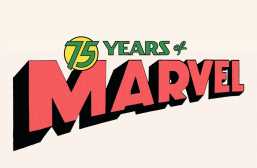
I’m not Asian and this was one of the finest books I have ever read; the meaning of the book was not only about being Asian, it was about being yourself.
I agree completely. It’s a celebration of what makes us each different and the promotion of self-acceptance.
Good article! I liked “Prime Baby” more though.
Thank you! I haven’t read some of his other work, but “Prime Baby” is definitely on my reading list.
I did feel the reasoning could have been stronger behind his moral lesson, such as giving clearer examples of WHY accepting yourself is important, it was clear to me that this was the lesson he was trying to teach.
I came across this book while creating a collection of award winning graphic novels for my university’s library. If I had a chance to meet an middle school teacher or a high school English teacher, I will urge them to introduce American Born Chinese into their lessons. Not only does it display the struggle to distribute one’s life into three realities, but also exposes the undesired task to construct one’s identity according to the expectations a society. What Jin experienced applies to all what children of immigrant parents (including myself as a Haitian American)commonly experience.
This is an excellent and accessible graphic novel for that age group, even older, too. The problem with the curriculum is the marginalization of minority and women’s voices, as well as, the belief that graphic novels are inferior to novels. But there is so much depth and content to this one and others like it that can be appreciated by all walks of life.
Finally, someone has written about the Asian American experience. Talking from personal experience, it can be very isolating and frustrating to be an Asian in America. Not fully accepted, not comfortable in your own skin, and embarrassed at times by your own culture.
Love the article! 🙂
Thank you very much! And thanks for helping to edit it.
Great article. I’m happy that this graphic novel continues to get press and gains more and more fans. It is a great addition to the genre and a welcome breath of fresh air to those seeking a bit more substance in their books.
lol
When I was younger I disassociate with my Hispanic, to this day I don’t really speak a word of Spanish, but this thing about this book that speaks to all minorities is that you don’t have ashamed of your race, you are you, is just the race is a small part of identity.
I bought this at the book fair at my school years ago and expected something weird and i read it for five minutes and it turned out that i read it in one day. ITS GREAT!
So the book helps people of all races sympathize with discriminated Asian Americans. More graphic novels should have similar aims.
I’ve seen this book before, and I remember a couple of my classmates having to read it for a class in high school. After reading this article, and hearing some of the reviews from my friends, I think I’ll have to add this book to my “to-read” list.
I just presented on this graphic novel in my Young Adult Fiction class and it really surprised me. I am usually not into graphic novels, and so I was skeptical when I started American Born Chinese, but after completing it I was pleasantly surprised. It is so interesting to see how Gene Luen Yang brings ancient Chinese lore to a modern, relatable situation. The molding of all three story-lines into one is cleverly done and I highly suggest this novel to anyone with a little bit of free-time!
Wow, this really inspired me to pick this book up. It looks really interesting and it covers some really thought-provoking topics. People talk down to graphic novels all the time and I love it when I see works like this that just stick it to all the haters! I’ll definitely put this on my reading list.
If you liked this book, definitely check out the “Boxers” and “Saints” graphic novels by the same author. Two really dope perspectives on the Boxer Rebellion in China.
I read this in an Asian Studies course in college. It’s nice to see someone still pulling meaningful analysis out of it. Well done!
I read this graphic novel for my Young Adult Literature class and have been enamored with it ever since. The themes you pointed out in this article were among my favorites discussed in the book. One thing I really enjoyed about the 3 separate protagonists was the clear sense you get of how other people’s perceptions of your identity influence who you are, how you act, dress, and even speak. Too often, people think that racism isn’t a problem anymore. In most recent cases, it isn’t as violent or as blatant as burning flags and segregated drinking fountains, but this novel points out that even in its banality (“Do you eat dogs?”) it is still an issue that needs to be addressed. Thanks for writing!
So I got this book from the library yesterday and read the whole thing and then came back and reread your article. It was a really interesting piece and your analysis really added to my reading experience. So thanks!
It sounds like a great cultural material, I will pick this up.
Interesting overview and a good insight into matters relating to identity.